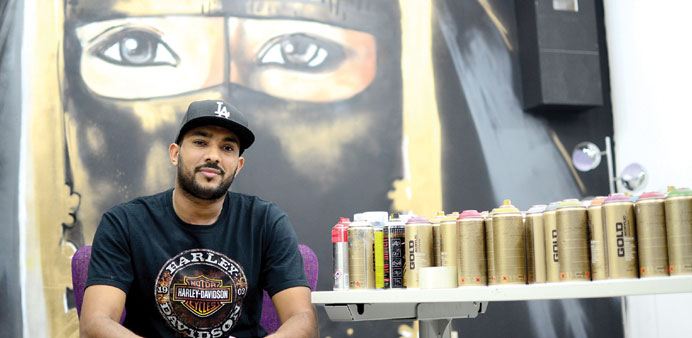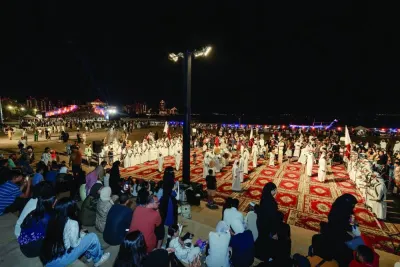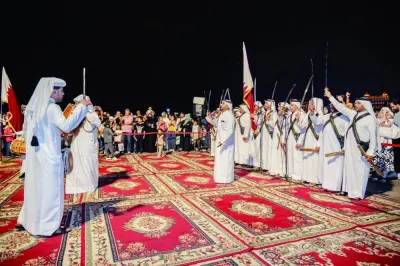THE ARTIST: Mubarak al-Malik at the workspace in Katara Art Studios. Behind him is one of the walls he is working on. Photo: Anand Holla
By Anand Holla
Inside the labyrinthine bylanes of Katara, in a room of Building 19, feisty hisses of Montana Gold acrylic spray paint and its accompanying rich aroma fill the air.
Armed with an arsenal full of cool cans, graffiti artist Mubarak al-Malik is working up two massive, awe-inspiring images on two walls at a Ramadan special workspace at Katara Art Studios.
Titled Graffiti Live, the Qatari artist’s workspace kicked off on the first day of Ramadan and is on till the last day of the holy month – and it certainly doesn’t carry the aloofness that usually comes with an artist’s studio. “Anyone passing by can come in, interact, ask me questions on how to use spray paint for graffiti, where to find the materials or how to get started,” al-Malik says, “I am not keeping my workspace out of bounds for the enthusiasts or the curious lot.”
Bit by bit, al-Malik is jazzing up the walls in spectacular hues of the German-made Montana Gold spray paint. The high-covering, quick-drying acrylic lacquer is a hit with graffiti artists all over and its specially developed low-pressure system promises maximum accuracy to meet the highest requirements.
“Earlier, there was no shop in Qatar that sold quality graffiti materials such as these,” he says, pointing at a table teeming with paint spray cans of all conceivable colours, “Now, I get these from the Student Centre in Qatar Foundation.”
A consummate painter who has held exhibitions both in and outside Qatar, al-Malik turned his creative attention to graffiti three years ago. “Graffiti is a new emerging form of art around the world. When you travel, you will see it everywhere and it is meant for everyone to see. In Qatar, there may only be a couple of other artists who do graffiti. I look forward to developing my style over time and eventually showcasing them through an exhibition.”
Since Katara asked al-Malik to use the space so as to expose people to the art of graffiti, al-Malik has stuck to spray-painting the walls with two “traditional images” of Arab women clad in burqa and batula (a face mask traditionally worn by women in the Gulf region). He explains, “I wanted to create simple works that encompass our tradition. A lot more nuances are still to be completed.”
Al-Malik needn’t worry – he has all the time till the end of Ramadan to finish his works. “These two walls will stay this way for two years. That’s good for me,” he says, smiling, “I work on them every night, from 8pm to 10pm, and I get to have a lot of interesting conversations with people who drop by.”
When he isn’t creating impressive works of art or cruising on his Harley, al-Malik works as a sport teacher at Al Yarmuk School, teaching students of class 7, 8 and 9. “The only problem is that though Qatar has several centres of art, there’s no special section for graffiti art,” he points out, “We are now trying to build groups and spread out, so as to establish our presence in the scene. If we gather momentum, perhaps we can use graffiti art to good effect on stadium walls or through the city during World Cup 2022 in Qatar.”
Be it the stunning portraits of women or neatly designed messages; most of the graffiti that al-Malik has unleashed on walls across the city is of top quality. “I have made graffiti on some really big walls in Doha,” he says.
But is it legal to do that? “No,” he says and laughs, “But the kind of art I do tries to make something beautiful. I don’t ever write negative messages or deface the walls with bad art. People passing by in cars pull up to tell me it is nice. It feels good to hear that.”



